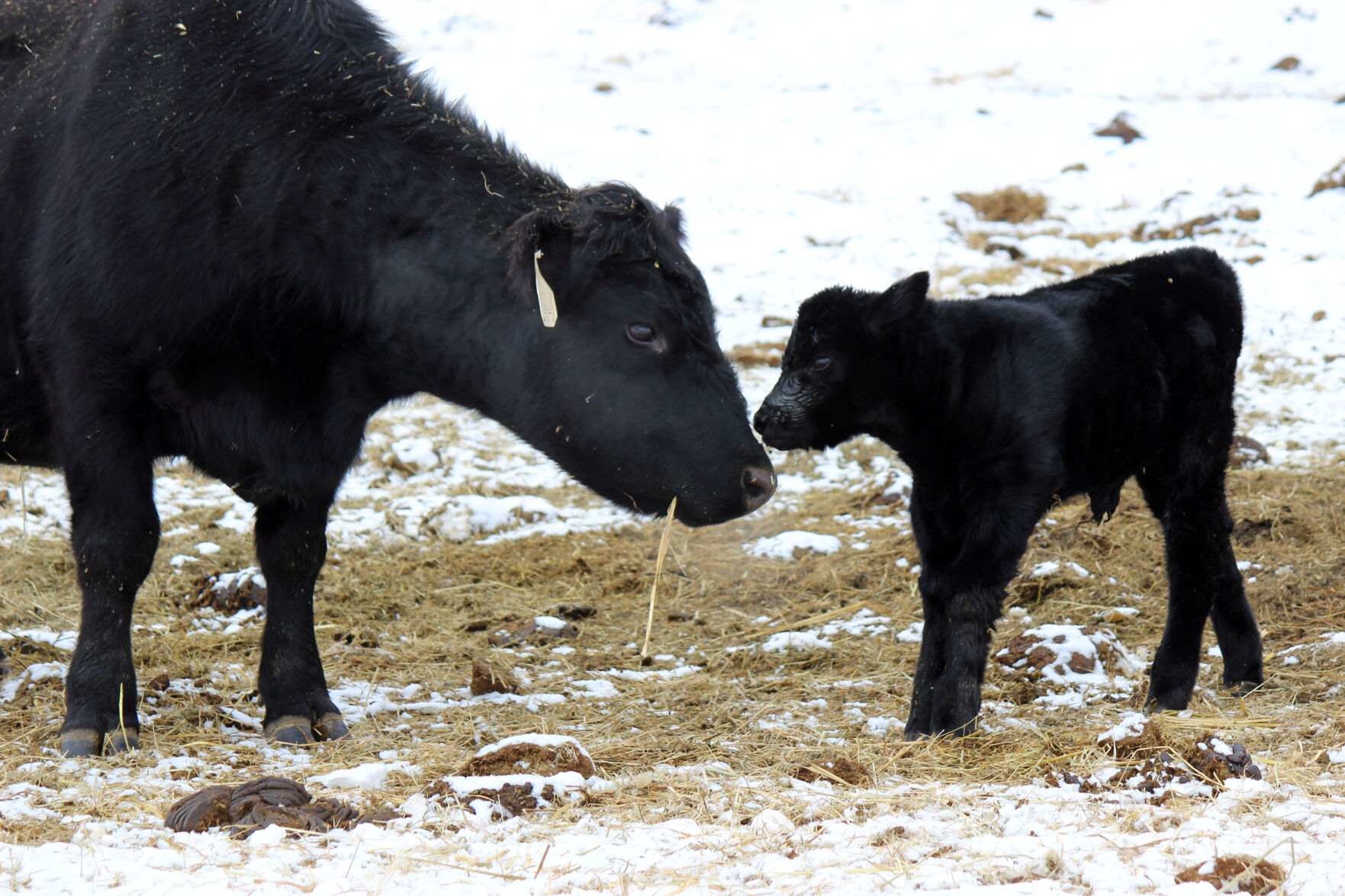K-State beef cattle experts outline when a calving challenge is a medical emergency
When a new little one joins the world, it can be an exciting time, but not all births are easy. For beef cattle, it is important to know what is considered a medical emergency, according to the veterinarians at the Kansas State University Beef Cattle Institute.
Speaking on a recent Cattle Chat podcast, the veterinarians discussed two calving-related challenges that cows can experience — retained placentas and prolapses.
The placenta nourishes the calf while in the womb. Often after the cow calves, the placenta comes out of her body on its own, said K-State veterinarian Brad White.
“With a cow, the attachment between the placenta and the uterus is like fingers going into little holes, and so it is important to let the cow shed that placenta without pulling on it or there will be little pieces of tissue left behind and that can damage the inside of the uterus,” White said.
A retained placenta is not a medical emergency for a cow, and it is best left alone, said K-State veterinarian Bob Larson.
“It is important to monitor the cow and if she is acting normal the placenta will likely come out on its own within a couple of days,” he said.
Larson added that retained placentas often occur following an abortion, or when the cow has had a difficult birth or cesarian section.
Along with monitoring the placenta, producers also need to monitor cows for prolapses. There are three types to watch for — rectal, vaginal and uterine.
“With a prolapse, the parts that should be on the inside of the body are now on the outside and then have little protection from the elements, so those must get put back in place quickly,” White said.
To help producers recognize which part has come out of the cow, K-State veterinarian Brian Lubbers made this analogy: a rectal prolapse is the size of a softball; a vaginal prolapse is the size of a volleyball; and a uterine prolapse is bigger than a beach ball.
“If it is before calving, it is most likely a rectal or vaginal prolapse, while post-calving it is almost always a uterine prolapse,” Lubbers said.
Larson added: “A uterine prolapse is always a medical emergency and needs to be addressed immediately, while the other two types of prolapses need to be dealt with in a timely manner.”
Depending on what type of prolapse has occurred, producers may choose not to retain the cow in the herd, Larson said.
“There is a genetic component to a vaginal prolapse that is related to the structure around the vagina, while a uterine prolapse is almost always related to a difficult birth,” Larson said.
To hear the full discussion, listen to Cattle Chat on your preferred streaming platform.




